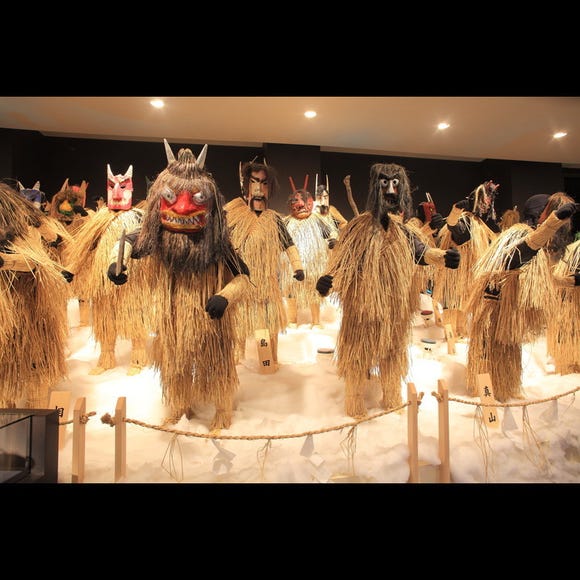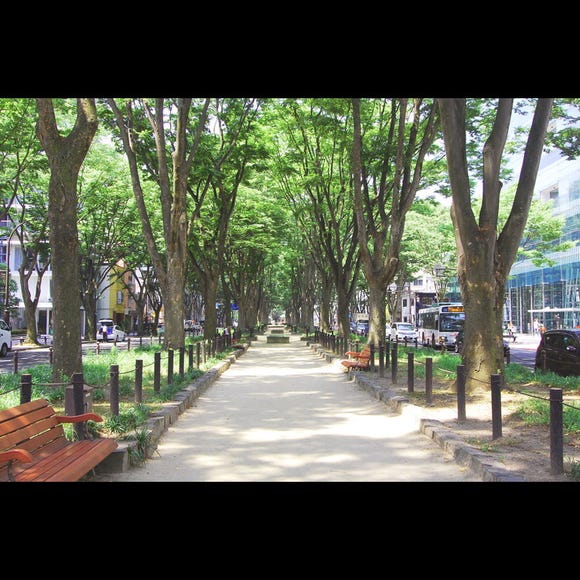
Tucked away in the mountains of Miyagi Prefecture, Zao Fox Village is home to more than 100 foxes roaming freely in a spacious, nature-filled park. Visitors can watch them play, nap, and interact up close—an experience that has captured global attention thanks to countless viral photos.
From autumn through winter, the foxes’ coats grow thick and fluffy, making it the most magical season to visit, snap photos, and enjoy this one-of-a-kind animal encounter!
(This article contains affiliate links)
- Table of Contents
-
- Where is Zao Fox Village and How to Get There
- Important Rules Before Meeting the Foxes
- A Fox Paradise: Watch Them Play and Relax
- Adorable Baby Foxes in Spring and Summer
- Fluffy in Winter, Sleek in Summer
- Six Different Fox Breeds to Spot
- Are Foxes Really Sleeping All Day?
- Echinococcus and Safety Measures
- Beyond Foxes: Meet Goats, Ponies, and Rabbits
- Take Home Cute Fox-Themed Souvenirs
Where is Zao Fox Village and How to Get There

Zao Fox Village is located in Zao Sanroku, Shiroishi City, Miyagi Prefecture. The city is in the southern part of Tohoku, and it takes about 1 hour and 50 minutes by Tohoku Shinkansen from Tokyo Station to Shiroishizao Station.
From the station to the village it takes 20 minutes and about 4,000 yen by taxi. Nonetheless, it is recommended to visit the fox village by car, from the Joban Expressway the Shiroishi IC exit is the most convenient one to reach it.
The number of visitors from abroad has been increasing rapidly in recent years and has become a sightseeing spot. A lot of visitors take many pictures touching or holding the cute Japanese foxes and spread throughout the world through Facebook, Twitter, and Instagram.
It makes more and more people, especially from abroad, to want to visit the place. According to statistics from 2015, about 10% of the 100,000 visitors that year were from abroad, and this number has been rising.
And in a 2024 survey by a Japanese research company ranking Miyagi Prefecture’s top attractions for foreign travelers, Fox Village claimed the number-one spot.
Important Rules Before Meeting the Foxes

Between the reception area and the entrance gate is a hallway lined with cautionary signs.
The rules include “Stay on the pathway,” “Do not crouch to take photos,” “Do not drop items,” “Do not touch the foxes,” and “Do not feed them outside designated areas.”
These guidelines follow the natural habits of the foxes and help ensure both your safety and theirs.
Be sure to read them carefully to avoid being scratched or bitten. All notices are also written in English, so overseas visitors can feel at ease.
A Fox Paradise: Watch Them Play and Relax

When you pass through the gate, a foxes’ paradise opens before you.
In the small square built along the hillside, some foxes nap while others play with each other.
Visitors may only walk along the maintained pathways, not in the areas where foxes are resting or playing.
At times, foxes may lie across the path or wander onto it. If you crouch down for photos or try to touch them, they may become defensive—something to keep in mind when taking pictures.
For an additional fee, visitors can pet a fox or even hold one on their lap.
Adorable Baby Foxes in Spring and Summer

Japanese foxes usually give birth between March and May. After this season, you may spot some fox pups in the reception area.
From May to July, visitors can pet or hold the young foxes for an extra fee of 700 yen. This experience is one of the most popular attractions.
In the middle of the park is a feeding area where many foxes gather. Fox food is sold at the reception for 200 yen, allowing visitors to enjoy feeding and interacting with them.
Fluffy in Winter, Sleek in Summer

In summer, the coats of Japanese foxes look a bit thin and loose.
As the weather cools from late autumn into winter, their fur grows thick and fluffy.
During this season, the foxes look especially adorable, drawing many visitors to the park.
Even though Zao is blanketed in snow, the park remains open throughout the winter.
Six Different Fox Breeds to Spot

Six types of foxes live in the village: red foxes, silver foxes, blue arctic foxes, white arctic foxes, platinum foxes, and cross foxes. It’s enjoyable to wander the park and spot the different fur colors.
The foxes are especially drawn to black tights, fluttering skirts, and dangling straps from coats or bags.
Since wild foxes instinctively hunt small animals like mice, they naturally react to small moving objects. Visitors should take care with their clothing and belongings while in the park.
Are Foxes Really Sleeping All Day?

All around the park, you’ll notice wooden beds where foxes love to nap. For visitors, these sleepy moments make perfect photo opportunities.
The sloping paths lined with red torii gates are also highly recommended for pictures. The vivid gates combined with the foxes create a quintessential Japanese-style scene.
From mid-October, autumn colors arrive in the park and surrounding hills. The broadleaf trees turn brilliant shades of red and yellow, offering the unique chance to enjoy fall foliage while interacting with the foxes.
Echinococcus and Safety Measures

Echinococcus is a parasite found in wild foxes, particularly in Hokkaido.
Since the park opened, every measure has been taken to prevent infection. All foxes here are artificially bred, and none have ever been infected with echinococcus.
In addition, regular pest control and other safety measures are carried out, ensuring visitors can interact with the foxes with peace of mind.
Beyond Foxes: Meet Goats, Ponies, and Rabbits

If you have had enough interacting with foxes, there is a place where goats, ponies and rabbits dwell. Their food is sold for 200 yen at the contact section dividing each animal and you can experience feeding animals. It depends on the time, but it is also possible to pet and hold the rabbits.
Take Home Cute Fox-Themed Souvenirs

After spending time with the foxes and other animals, stop by the shop near the reception. It offers fox-themed sweets, stationery, stuffed animals, and more.
Popular souvenirs include rice crackers, chocolate crunch, wooden crafts, towels, magnets, and a variety of fox keychains.
Zao Fox Village is especially popular in autumn and winter, when the foxes grow their fluffy coats and look rounder and cuter than ever.
Here, you can interact with them up close, take photos, and even feed them, making a visit to Zao Fox Village a truly memorable experience.
-
Zao Fox Village蔵王キツネ村
- Address Kawarago 11-3, Fukuokayatsumiya, Shiroishi, Miyagi 989-0733
- Phone Number 0224-24-8812
・Hours: Mar 16–Nov 30, 9 AM–4:30 PM (last entry 4 PM); Dec 1–Mar 15, 9 AM–4 PM (last entry 3:30 PM)
・Admission: 1,500 yen
・Closed: Wednesdays (open in February & August)
Text by: Shoepress
*Prices and options mentioned are subject to change.
*Unless stated otherwise, all prices include tax.
Popular Tours & Activitiess
Recommended places for you
-

Namahage Museum
Other Museums
Surrounding Areas Of Akita
-

Asamushi Onsen
Hot Springs (Onsen) & Bath Houses (Sento)
Aomori, Hirosaki And Hachinohe
-

Oirase River
Rivers, Lakes & Canyons
Other Surrounding Areas Of Aomori
-

Ishiguro Samurai House
Historical Places
Surrounding Areas Of Akita
-

Hirosaki Park
Parks
Aomori, Hirosaki And Hachinohe
-

Jozenji Street
Other Townscapes
Sendai And Matsushima
-

Niigata Sake no Jin 2026: Guide to Japan's Most Legendary Sake Weekend
-

Dining in Yamagata: Must-Try Foods & Top Restaurants Near the Station
by: ShiroKu inc.
-
Ad

Just one stop from Haneda Airport! "Truly Japanese!" Food, Fun, and Knowledge Gather at HICityⓇ Enjoy An Electrifying Night at "Japan Night Fever: Haneda Innovation City"
by: Yohei Kato
-

Shopping in Niigata: 9 Must-Buy Souvenirs & Local Sake to Take Home
by: ShiroKu inc.
-
Ad

Meet GU, UNIQLO’s Stylish Sister Brand! Fashion-Forward Clothing in the Latest Colors (Featuring Exclusive Coupon)
-
Ad

Why Fukushima is the Next Big Food Destination in Japan The Foodie Paradise Only 90 Minutes from Tokyo
-

Aizu-Wakamatsu Sake Crawl: Enjoy the Heart of Fukushima's Sake Culture
-

Visiting Aquamarine Fukushima: Tohoku's Largest, Must-See Aquarium!
-

Sendai Umino-Mori Aquarium: Inside Northeast Japan's Largest Aqua Attraction
-

Takahan Ryokan: Enjoy Spectacular Hot Spring Views at Yuzawa's Premier Traditional Inn!
-

Kamo Aquarium Guide: Travel to Yamagata To See The Best Jellyfish in the World?!
-

Yamagata Prefecture Guide: Destinations, Activities, Travel Advice, Shopping & More
by: Steve Csorgo














